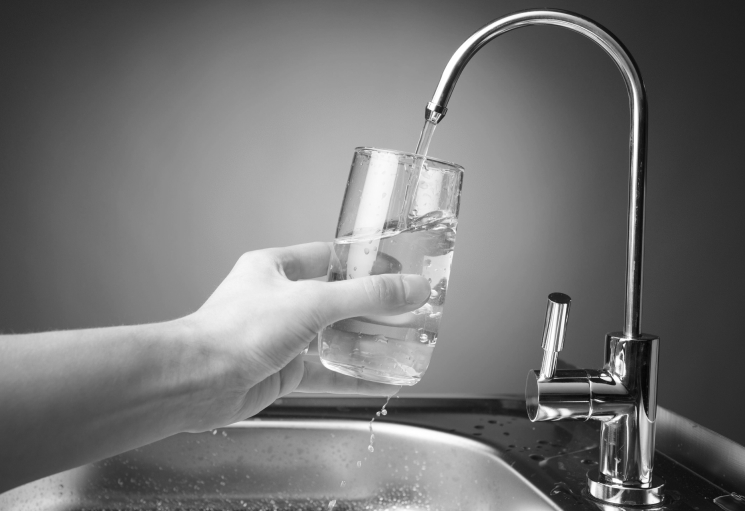
Ultraviolet (UV) is proven to be the best way to disinfect your water against water-borne microorganisms and pathogens. The most common residential application for UV systems is with lake and well water, which can contain bacteria making it unsafe for drinking. Municipal water, although treated by the municipality, can still be susceptible to many factors that can cause boil water advisories, leaving your family exposed to unsafe drinking water.
Regardless of your water source, a UV system works by exposing water to a high-intensity UV lamp. As water flows past the lamp, the DNA of the harmful contaminants is altered, rendering them incapable of reproducing and spreading disease. A UV system drastically improves the quality of your family’s drinking water, without the addition of any chemicals.
What are the Benefits of a UV System?
Ultraviolet systems are relatively inexpensive to operate, typically using the same amount of hydro as a 40-watt lightbulb. UV systems are easy to install and can be sized to be used in multiple applications, such as homes, cottages, RVs, schools, restaurants, hotels, etc.
During the disinfection process, UV systems do not use any chemicals, so there is no danger of chemical by-products or chemical taste in your water.
A UV system disinfects your water against multiple disease-carrying microorganisms and pathogens, including:
- E-coli
- Coliform
- Cryptosporidium
- Giardia Lamblia
- Viruses
- Cysts
- Spores
- Salmonella
- Many other microorganisms
Pre-treating Water for UV Disinfection
As discussed, UV disinfection works when water is exposed to a high-intensity UV lamp. The light from this lamp must be able to reach the pathogens and microorganisms to be able to inactivate them. When the water passing by the lamp is not clear, the light will not be as effective, resulting in sub-standard disinfection. Substances in the water can also leave a coating on the lamp sleeve, reducing the amount of light the lamp can emit.
For a UV system to work at its most effective, most water will require pre-treatment. Pre-treatment filters are easily added to your water treatment system and will generally include:
- Sediment Reduction
- Iron Removal
- Water Softening
- Tannin Removal
Sediment, sand, and silt must be removed from your water supply, prior to entering your UV, as it can negatively affect the level of disinfection and can harm some of the components in your system. In addition, you do not want these elements making their way into your drinking water.
Tannins are created by the breaking down of organic material, such as leaves, found in water. Water that is high in tannins will take on a yellow or amber colour. Similar to the way tannins in tea can stain a teacup, if tannins are not removed from water prior to entering your UV system, they will stain the lamp sleeve, reducing the amount of light that is able to shine and rendering the lamp ineffective in disinfecting your water.
A Water Depot water treatment expert can easily test your water for the presence of sediment and tannins to determine if your system will require these pre-treatment filters.
Maintenance
UV lamps and pre-treatment should be serviced and replaced every 12 months. Water Depot offers preventative maintenance and service packages to ensure that these components are being replaced properly and that you are getting the best quality water from your tap.
Water Depot
Did you find the information in this article useful? Water Depot are your local water treatment experts, carrying a large selection of Ultraviolet and pre-treatment products. Contact us today for your free water test.






